★★★★½
“From bad to hearse…”

 It has been a long time since we’ve enjoyed a film so much. Right from the start, which shows a bride, in her wedding-dress, being stalked by a demon (or does it?), this grabbed our attention, and hardly let up for a second until the finale. I have to say, the odds are that you will either love this film, or fail entirely to ‘get’ what it’s trying to do and dismiss it as a lame Buffy ripoff. But in our living-room, it got four enthusiastic thumbs-up from the viewing panel, and seems like the perfect complement to beer and pizza.
It has been a long time since we’ve enjoyed a film so much. Right from the start, which shows a bride, in her wedding-dress, being stalked by a demon (or does it?), this grabbed our attention, and hardly let up for a second until the finale. I have to say, the odds are that you will either love this film, or fail entirely to ‘get’ what it’s trying to do and dismiss it as a lame Buffy ripoff. But in our living-room, it got four enthusiastic thumbs-up from the viewing panel, and seems like the perfect complement to beer and pizza.
After the opening, things for Mallory (Bonamy) go from bride to worse. [Hey, so I squeeze every drop of use from a pun. Sue me.] She’s now head of a team that investigates, and deals with, paranormal attacks – France seems to be the only country which has realised that such evil critters actually exist. She loses one member of her squad while repelling ghouls at a convent, and at the same time, new pope Hieronymus I (Spielvogel) is being kidnapped. She discovers he’s being held hostage in a nightmarish alternate dimension, so has to follow, and save the world from demonic invasion through the Hellmou…er, portal which is going to be opened, oh, any minute now.
There’s no doubt that director Julien Magnat was influenced by all the “right” films when it came to constructing his heroine: Mallory has Lola’s hair, Buffy’s martial-arts skill, the intensity of Michelle Rodriguez, and some of Resident Evil‘s Alice too. But none of them ever had gloves with ‘FUCK EVIL’ on the knuckles, drove a hearse, ran over black cats because “you never know”, or wore a tight, red waistcoat with a big ‘M’ embossed on the back [how there’s room in it for a large gun remains a charming mystery!]. Portrayed by Bonamy, who is unknown outside France (her only English-language role is a schoolgirl in Merchant-Ivory’s Jefferson in Paris), Mallory comes across as a convincing and original entry in the action heroine genre.
The other members of the team are hardly less imaginative – or, at least, the females, the guys are nowhere near so colourful or interesting. Completing the heroic trio are Vena Cava (Ribier – I think the character’s name is a Diamanda Galas reference), a six-foot “action transvestite”, as Eddie Izzard would say, an explosives expert with automatic weaponry in her platform soles, and Talking Tina, a mute telepath who can transfer her consciousness into animals or the dumber end of humanity. Both are excellent supporting characters; in a kinder universe, they would merit franchises of their own, Cava, in particular,
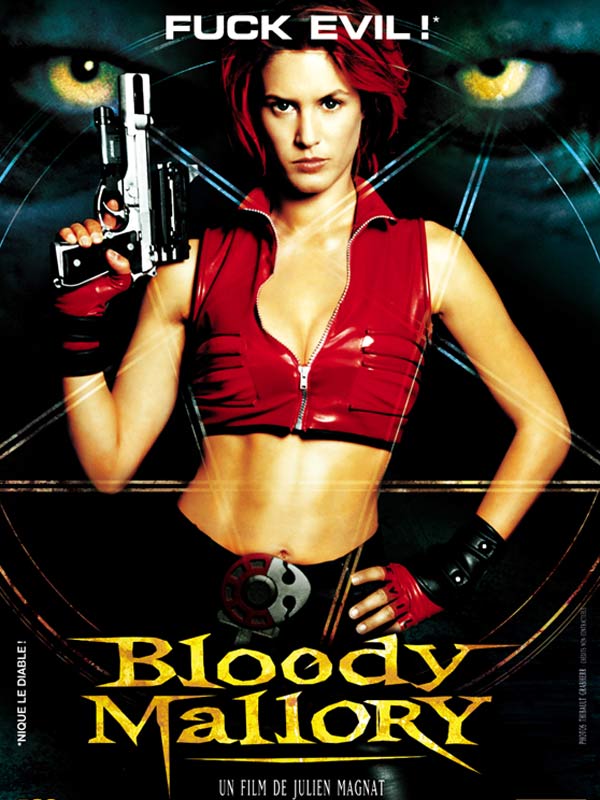 Less effective or interesting are the men, and it’s abundantly clear where Magnat’s passion lies. Father Carras (Collado), the Vatican priest and papal bodyguard is bland and colourless, despite having a name borrowed from The Exorcist. The best is actually Mallory’s demon husband (Julien Boisselier), now stuck in limbo after the murderous end to their marriage. The pair have a relationship which is genuinely touching, in a way which Joss Whedon could only dream of.
Less effective or interesting are the men, and it’s abundantly clear where Magnat’s passion lies. Father Carras (Collado), the Vatican priest and papal bodyguard is bland and colourless, despite having a name borrowed from The Exorcist. The best is actually Mallory’s demon husband (Julien Boisselier), now stuck in limbo after the murderous end to their marriage. The pair have a relationship which is genuinely touching, in a way which Joss Whedon could only dream of.
On the side of evil, again, the femmes rule, with Valentina Vargas and Sophie Tellier, as Lady Valentine and her shape-shifting sidekick, Morphine, giving performances which are suitably excessive and on the money. However, the climax of the film is disappointing, largely because Mallory has no genuine nemesis, with whom she can go toe-to-toe at the end – who’s she going to beat up, the Pope? [Actually, given his intolerant statements, you’ll likely be rooting for this from the get-go]
Some of the effects definitely leave a little to be desired – the demon masks look extremely rubbery, although personally, it reminded me of another energetic B-favourite, Rabid Grannies. However, the digital effects are great, particularly the exploding bodies; we especially loved the effect of Mallory’s cross-shaped holy-water spritzer. There were many moments where we went “Cool!”, at little things like the blood-red, swirling sky in the demon realm, the evaporation of Mallory’s husband into a cloud of rose petals, or the transformations of Morphine.
The attention paid to details like these helps immeasurably, and Magnat succeds admirably in his avowed intention of making something which has the look and feel of a Japanese comic-book come to life, with a lot of Dutch angles [this week’s pretentious technical term – it means the camera’s not level]. There’s almost no natural light at all, and each character has their own colour scheme: red/black for Mallory, blue/purple for Vena, burgundy/gold for Lady Valentine. Indeed, the soundtrack is by Kenji Kawai, whose credits include Ghost in the Shell.
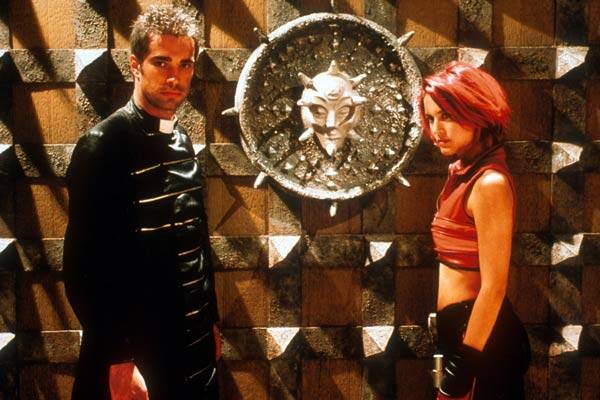 Perhaps what we enjoyed most was the balance Magnat strikes between parody and drama. This is clearly not intended to be taken seriously – but the characters keep such admirably straight faces, that it became very easy to buy into the whole mythos, which in reality wouldn’t stand up to ten seconds of close scrutiny. There’s none of the self-awareness that plagued the later seasons of Buffy, and nor is there much angst or whining. The heroine has a mission to complete, and gets on with it, in a refreshingly straightforward manner.
Perhaps what we enjoyed most was the balance Magnat strikes between parody and drama. This is clearly not intended to be taken seriously – but the characters keep such admirably straight faces, that it became very easy to buy into the whole mythos, which in reality wouldn’t stand up to ten seconds of close scrutiny. There’s none of the self-awareness that plagued the later seasons of Buffy, and nor is there much angst or whining. The heroine has a mission to complete, and gets on with it, in a refreshingly straightforward manner.
Magnat’s wants his next project to be a return to The All-New Adventures of Chastity Blade, expanding on a 32-minute short film he made in the summer of 1999. This starred Lisa (Nightmare on Elm Street) Wilcox, playing a housewife who finds herself sucked into the world of the titular 1930’s pulp-fiction heroine after getting a bullet in the head. If he brings the same sense of style and wit to that concept as we enjoyed here, it promises to be worth our attention. Meanwhile, Mallory was picked up by Lion’s Gate in November 2002, and was passed by the MPAA (R, natch) in April last year – the same week as Gigli! Since then, nothing. However, a quick search on Ebay reveals it’s available from, ahem, the usual sources. [Update: It’s due a September 2005 release on DVD] And if you see only one film about a red-headed, hearse-driving demon-hunter this, or any year, Bloody Mallory should definitely be it.
Dir: Julien Magnat
Star: Olivia Bonamy, Jeffrey Ribier, Adrià Collado, Laurent Spielvogel

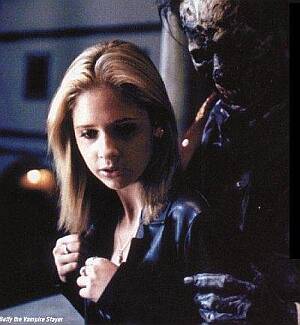 While there have been stand-out Buffy episodes since, season two perhaps ranks as the most consistently high in quality. There’s hardly an episode that ranks as less than excellent, and the writing is sparklingly witty, with more eminently quotable lines than you can shake a stake at.
While there have been stand-out Buffy episodes since, season two perhaps ranks as the most consistently high in quality. There’s hardly an episode that ranks as less than excellent, and the writing is sparklingly witty, with more eminently quotable lines than you can shake a stake at.




 Though with a tagline of “A howling hellcat humping a hot steel hog on a roaring rampage of revenge”, how
Though with a tagline of “A howling hellcat humping a hot steel hog on a roaring rampage of revenge”, how  Much like the first, bondage fans would probably mark this a grade, possibly one and a half, higher given the amazing length of time the heroine spends tied to racks and other torture devices – or just tied in general. Not that this, per se, makes it a bad movie. No, the severely limited budget (the population of the land where this takes place appears to be about 1/10th that of San Marino) and clunky acting take care of that…
Much like the first, bondage fans would probably mark this a grade, possibly one and a half, higher given the amazing length of time the heroine spends tied to racks and other torture devices – or just tied in general. Not that this, per se, makes it a bad movie. No, the severely limited budget (the population of the land where this takes place appears to be about 1/10th that of San Marino) and clunky acting take care of that…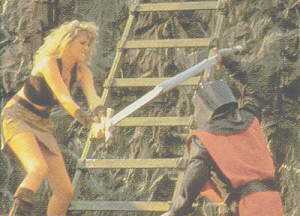 One interesting subplot is Ankaris’s daughter (Tijerina), a genuinely creepy teen with a disturbing interest in methods of torture. She has a crush on Amathea’s love interest and evokes the spirit of her dead mother to help her out. This angle adds a welcome depth, to a story that otherwise is largely what you would expect. The fighting is largely woeful: one participant holds their sword up while the other bangs their weapon off it. Yet, it’s never dull and Clarkson makes a good heroine, independent and feisty from the opening scene.
One interesting subplot is Ankaris’s daughter (Tijerina), a genuinely creepy teen with a disturbing interest in methods of torture. She has a crush on Amathea’s love interest and evokes the spirit of her dead mother to help her out. This angle adds a welcome depth, to a story that otherwise is largely what you would expect. The fighting is largely woeful: one participant holds their sword up while the other bangs their weapon off it. Yet, it’s never dull and Clarkson makes a good heroine, independent and feisty from the opening scene.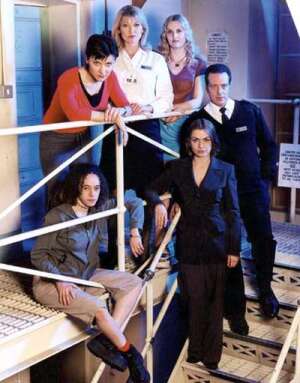 Somewhere around the middle of the series, I realised that this is soap-opera, pure and simple. As someone who’d never be seen dead watching a soap, this was disturbing. Fortunately, moments later, Jim Fenner did something else truly rotten to the core, and my attention went back to H.M. Prison Larkhall. Such is the joy of the show: it defies categorization.
Somewhere around the middle of the series, I realised that this is soap-opera, pure and simple. As someone who’d never be seen dead watching a soap, this was disturbing. Fortunately, moments later, Jim Fenner did something else truly rotten to the core, and my attention went back to H.M. Prison Larkhall. Such is the joy of the show: it defies categorization.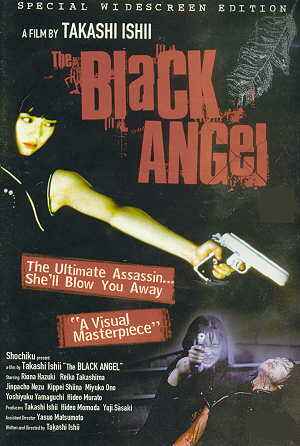 The first half of this is quite excellent. A young girl, Ikko, daughter of a Yakuza boss, sees her parents murdered on the orders of her step-sister but is rescued by the Black Angel (Takashima), a female assassin, and escapes to America. 14 years later, she returns (Hazuki), calling herself the Black Angel and starts wreaking revenge on those responsible – who retaliate by calling in the
The first half of this is quite excellent. A young girl, Ikko, daughter of a Yakuza boss, sees her parents murdered on the orders of her step-sister but is rescued by the Black Angel (Takashima), a female assassin, and escapes to America. 14 years later, she returns (Hazuki), calling herself the Black Angel and starts wreaking revenge on those responsible – who retaliate by calling in the 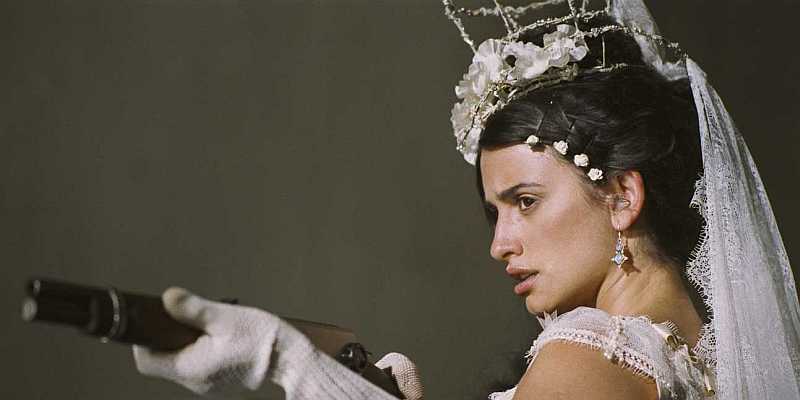 ★★★★
★★★★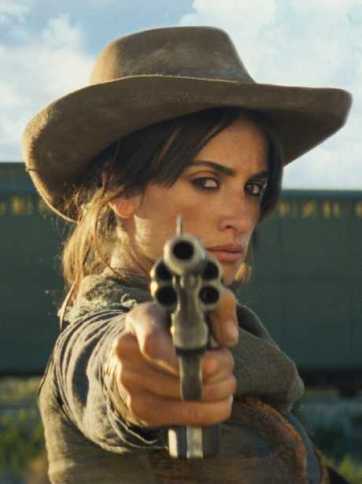 When they start their campaign, Jackson brings in a specialist in the new ‘scientific method’ of criminal investigation, Quentin (Zahn), to help track down the bandidas. However, after discovering Sara’s father was poisoned, heis convinced by the pair that he is actually working for the wrong side, and comes across to join them. The latest security measures are defeated – with the aid of a pair of ice-skates! – and as a result a train is loaded with the Mexican government’s gold reserve, to ship it to safety in Mexico. The bandidas resolve to take the cargo, but Jackson and his gang are waiting for them…as is Quentin’s fiancée…
When they start their campaign, Jackson brings in a specialist in the new ‘scientific method’ of criminal investigation, Quentin (Zahn), to help track down the bandidas. However, after discovering Sara’s father was poisoned, heis convinced by the pair that he is actually working for the wrong side, and comes across to join them. The latest security measures are defeated – with the aid of a pair of ice-skates! – and as a result a train is loaded with the Mexican government’s gold reserve, to ship it to safety in Mexico. The bandidas resolve to take the cargo, but Jackson and his gang are waiting for them…as is Quentin’s fiancée… What did disappoint me was the action. I expected more from Besson, who helped give us such gems as The Transporter and District B-13, as well as the titles mentioned above, though a couple of moments stand out. There’s a bravura slow-motion scene in the final battle – bullets, knives, bodies and debris fly in a single shot, the camera panning back and forth to capture the carnage. But, the most amazing part is seeing a horse, with a rider on its back, climb a ladder. This was apparently a combination of training (the horse, with a stunt rider, walked up a specially-made set of stairs) and CGI work by Parisian FX house Macguff, to replace the stairs with a ladder, add dust and bounce, etc. It’s a throwaway moment, in a throwaway film, but is worthy of note, and applause.
What did disappoint me was the action. I expected more from Besson, who helped give us such gems as The Transporter and District B-13, as well as the titles mentioned above, though a couple of moments stand out. There’s a bravura slow-motion scene in the final battle – bullets, knives, bodies and debris fly in a single shot, the camera panning back and forth to capture the carnage. But, the most amazing part is seeing a horse, with a rider on its back, climb a ladder. This was apparently a combination of training (the horse, with a stunt rider, walked up a specially-made set of stairs) and CGI work by Parisian FX house Macguff, to replace the stairs with a ladder, add dust and bounce, etc. It’s a throwaway moment, in a throwaway film, but is worthy of note, and applause.













 It has been a long time since we’ve enjoyed a film so much. Right from the start, which shows a bride, in her wedding-dress, being stalked by a demon (or does it?), this grabbed our attention, and hardly let up for a second until the finale. I have to say, the odds are that you will either love this film, or fail entirely to ‘get’ what it’s trying to do and dismiss it as a lame Buffy ripoff. But in our living-room, it got four enthusiastic thumbs-up from the viewing panel, and seems like the perfect complement to beer and pizza.
It has been a long time since we’ve enjoyed a film so much. Right from the start, which shows a bride, in her wedding-dress, being stalked by a demon (or does it?), this grabbed our attention, and hardly let up for a second until the finale. I have to say, the odds are that you will either love this film, or fail entirely to ‘get’ what it’s trying to do and dismiss it as a lame Buffy ripoff. But in our living-room, it got four enthusiastic thumbs-up from the viewing panel, and seems like the perfect complement to beer and pizza. Less effective or interesting are the men, and it’s abundantly clear where Magnat’s passion lies. Father Carras (Collado), the Vatican priest and papal bodyguard is bland and colourless, despite having a name borrowed from The Exorcist. The best is actually Mallory’s demon husband (Julien Boisselier), now stuck in limbo after the murderous end to their marriage. The pair have a relationship which is genuinely touching, in a way which Joss Whedon could only dream of.
Less effective or interesting are the men, and it’s abundantly clear where Magnat’s passion lies. Father Carras (Collado), the Vatican priest and papal bodyguard is bland and colourless, despite having a name borrowed from The Exorcist. The best is actually Mallory’s demon husband (Julien Boisselier), now stuck in limbo after the murderous end to their marriage. The pair have a relationship which is genuinely touching, in a way which Joss Whedon could only dream of. Perhaps what we enjoyed most was the balance Magnat strikes between parody and drama. This is clearly not intended to be taken
Perhaps what we enjoyed most was the balance Magnat strikes between parody and drama. This is clearly not intended to be taken